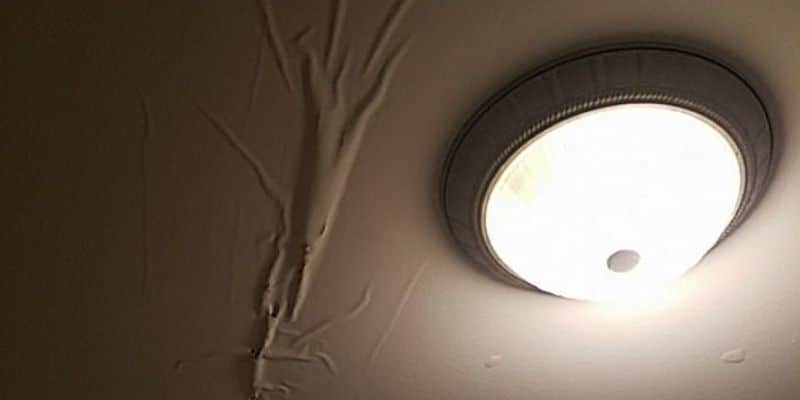Just how do you actually feel with regards to How to detect water leaks in your home?

Leakages not just cause waste of water however can likewise create unneeded damage to your home and advertise undesirable organic development. Regrettably, water leakages may go undetected since a lot of the pipework in our home is hidden. By comprehending and also looking for daily situations that cause leakages, you can safeguard your home from future leaks as well as unneeded damages. Today, we will certainly take a look at six leakage triggers that might be creating your pipes to drip.
Encroaching origins
The majority of water leakages begin outside your home rather than inside it. If you notice an abrupt decline in water pressure, claim in your faucet, require time to go out as well as analyze your lawn. You might discover damp spots or sinkholes in your lawn, and that could indicate that tree roots are getting into water lines triggering water to permeate out. You can have your plumber check for intrusion, especially if you have trees or hedges near your building.
Rusty water supply
As time passes by, your plumbing system ages and corrosion such as rust may start eating away the pipes. This may be the source of staining or bending on your pipes. This requires an examination with your plumber immediately. Think about replacing the pipes considering that they are at a higher danger of corrosion than the more recent versions if our plumbing system is old.
Faulty Pipeline Joints
The point at which your pipelines connect is often the weakest web link in the waterline. Pipeline joints can weaken with time, resulting in water leaks. However, most of pipe joints are not quickly visible. If you have noisy pipes that make ticking or banging noises, specifically when the warm water is activated, your pipeline joints are probably under a lot of pressure. It is a good idea to have your plumber check your system once a year.
Instant temperature level adjustments.
Severe temperature modifications in our pipelines can create them to increase and also contract suddenly. This growth as well as tightening might trigger fractures in the pipelines, particularly if the temperature level are listed below cold.
Poor Water Connectors
At times, a leakage can be caused by loosened hose pipes as well as pipes that supply your devices. In instance of a water links leak, you might see water running directly from the supply line or puddles around your home appliances.
Clogged Drains
Blocked drains pipes could be bothersome and also inconveniencing, but they can sometimes end up creating an overflow bring about burst pipelines. Maintain getting rid of any products that might go down your drains pipes that can obstruct them to prevent such aggravations.
All the above are causes of leaks however not all water leakages arise from plumbing leaks; some leaks might originate from roof covering leaks. All leakages must be repaired promptly to prevent water damage.
Leakages not only cause waste of water but can likewise create unneeded damage to your home and advertise unwanted organic development. By looking and also comprehending for everyday circumstances that cause leaks, you can secure your residence from future leakages and also unnecessary damage. Today, we will certainly look at 6 leakage creates that may be triggering your pipes to leak.
At times, a leak can be triggered by loosened tubes and pipelines that supply your devices. In instance of a water links leak, you might observe water running straight from the supply line or puddles around your devices.
How To Check For Water Leak In Your Home
How To Check for Leaks
The average household's leaks can account for nearly 10,000 gallons of water wasted every year and ten percent of homes have leaks that waste 90 gallons or more per day. Common types of leaks found in the home are worn toilet flappers, dripping faucets, and other leaking valves. These types of leaks are often easy to fix, requiring only a few tools and hardware that can pay for themselves in water savings. Fixing easily corrected household water leaks can save homeowners about 10 percent on their water bills.
To check for leaks in your home, you first need to determine whether you're wasting water and then identify the source of the leak. Here are some tips for finding leaks:
Take a look at your water usage during a colder month, such as January or February. If a family of four exceeds 12,000 gallons per month, there are serious leaks.
Check your water meter before and after a two-hour period when no water is being used. If the meter changes at all, you probably have a leak.
Identify toilet leaks by placing a drop of food coloring in the toilet tank. If any color shows up in the bowl after 10 minutes, you have a leak. (Be sure to flush immediately after the experiment to avoid staining the tank.)
Examine faucet gaskets and pipe fittings for any water on the outside of the pipe to check for surface leaks.
Undetected water leaks can happen without the home or business owner even realizing. If you suspect a water leak, but not able to find the source. It is time to contact a professional water leak detection service, The Leak Doctor.
How To Find a Water Leak In Your Home
https://www.leakdoctor.com/blog/How-To-Check-For-Water-Leak-In-Your-Home_AE197.html

Hopefully you enjoyed our excerpt on How to Find Water Leaks. Thanks a lot for taking the time to read through our post. Sharing is good. Helping others is fun. Bless you for your time. Visit us again soon.
Act immediately.
Comments on “Understanding What Leads To Water Seepage Occur So Often in Your Home”